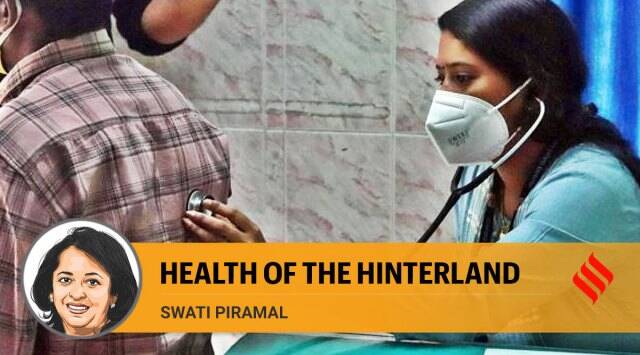
India@75, Looking at 100: How we can resolve the tribal health challenge
In over seven decades since Independence, India has made remarkable strides, emerging as the world's fifth-largest economy and a leader in the digital realm. Even as economic and geopolitical headwinds cast a shadow on global economies, India's growth story is a reminder of our resilience.
India, at various points, has demonstrated the ethos of Vasudhaiva Kutumbakam — One World, One Family. One example is India's contribution towards the global vaccination drive during the pandemic, when it supplied vaccines to countries across the globe. Under the government's initiative, “Vaccine Maitriâ€, India provided over 60 million vaccine doses to neighbouring countries and other parts of the world. For a country with an over 1.4 billion population, our healthcare ecosystem is truly a feat to be proud of.
As we celebrate our achievements, we must also look towards the future and consider how we can build a healthcare system that caters to all communities. The challenge lies in finding a way to achieve this without disrupting identities.
For instance, tribal communities in India constitute 8.9 per cent of the population and remain the most neglected and deprived group when it comes to access to healthcare. As per a report by the Ministry of Tribal Affairs, the mortality rate in tribal areas is 44 per cent higher than the national average, and infant mortality is 63 per cent higher. This underlines the urgent need to empower tribal communities and ensure they receive equitable healthcare access. The challenges they face are multifaceted — lack of infrastructure, medical professionals, connectivity, affordability, equipment, insurance, funding, and much more. I believe that with suitable investments, public policy and governance, we can make healthcare affordable and accessible to all.
Empowering tribal communities must be done strategically, keeping in mind their traditions and other intangible heritage touchpoints. The health of communities is influenced by various factors. These factors differ significantly for tribal communities, with a more communitarian social setup, an underdeveloped economy dependent on forest resources and unique geographic conditions, among others. As a result, their health outcomes necessitate a unique approach.
A long-term solution to the tribal healthcare challenge, I believe, is investing in medical colleges and training centres across such remote areas. These institutions can equip local healthcare providers with the necessary skills and knowledge to offer quality healthcare services. It has the potential to bridge the gap in healthcare infrastructure and provide employment opportunities for the local population. Since they hail from the region, local healthcare providers can understand the cultural sensitivities of tribal communities.
What I find more powerful is the capabilities of public partnerships in redefining healthcare facilities and accessibility. Recently, NITI Aayog and United Nations Development Programme (UNDP) jointly released a compendium of best practices across 14 social sectors, highlighting initiatives that are sustainable, innovative, impactful and replicable. Among them is the Mera Baccha Abhiyan, which aims to fight malnutrition through public participation in Datia district, Madhya Pradesh. As a result, the malnutrition rate in the district dropped by 17.5 per cent, making it lower than the state's average. Because of this, the district also witnessed a rise in immunisation from 53.2 per cent to 79.6 per cent, breastfeeding from 32 per cent to 56.4 per cent, and a drop in diarrhea from 12.9 per cent to 5.7 per cent. This scheme perfectly demonstrates the power of public partnerships in healthcare provision.
As India moves towards its centenary, the responsibility of providing healthcare, a fundamental human right, for all our fellow citizens lies both with private and government institutions. Through inclusive leadership and investments in healthcare infrastructure in tribal areas, we can empower our tribal communities, achieve sustainable development, and fulfil the United Nations SDGs. Let us pledge to ensure no one is left behind as the country moves towards India@100.
(The writer is Dr. Swati Piramal; views are personal)
This article was first published on 24 May 2023 in The Indian Express
TAGS
SHARE





